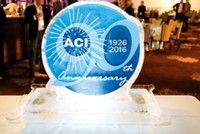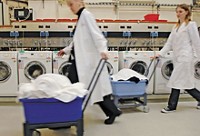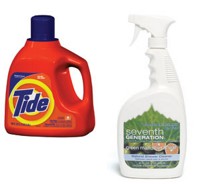Advertisement
Grab your lab coat. Let's get started
Welcome!
Welcome!
Create an account below to get 6 C&EN articles per month, receive newsletters and more - all free.
It seems this is your first time logging in online. Please enter the following information to continue.
As an ACS member you automatically get access to this site. All we need is few more details to create your reading experience.
Not you? Sign in with a different account.
Not you? Sign in with a different account.
ERROR 1
ERROR 1
ERROR 2
ERROR 2
ERROR 2
ERROR 2
ERROR 2
Password and Confirm password must match.
If you have an ACS member number, please enter it here so we can link this account to your membership. (optional)
ERROR 2
ACS values your privacy. By submitting your information, you are gaining access to C&EN and subscribing to our weekly newsletter. We use the information you provide to make your reading experience better, and we will never sell your data to third party members.
Environment
Internal Collaboration Yields New Products
January 26, 2004
| A version of this story appeared in
Volume 82, Issue 4
COVER STORY
Internal Collaboration Yields New Products
There's a lot of technology hiding in the corners of multinational specialty chemical companies. Several of them are taking steps to ferret it out and bring it to bear on the soap and detergent industry.
In mid-2002, Rhodia created an internal team called Generys, which is charged with gathering all active ingredient delivery technologies within the company. The team pulled together what Herman Mihalich, Rhodia's home care vice president, calls "a powerful toolbox" that is available to all the firm's application development teams.
Generys is now working with Rhodia's perfumery ingredients unit and application labs in Mihalich's business to apply delivery, encapsulation, and deposition technology to cleaning product markets. "This is still a work in progress, but I feel we are uniquely positioning ourselves to bring useful solutions to this application," he says.
Degussa's internal collaboration effort is called Linking Knowledge. David Del Guercio, Degussa's business line director for textile care, describes it as "an initiative to encourage synergies across Degussa businesses that don't normally interact in their daily operations."
The program was launched about a year ago in personal care and has already resulted in a commercial success, according to John C. Dougherty, business line director for personal care at Degussa. He says a three-way effort between Degussa's feed additives, fine chemicals, and Goldschmidt units developed a hair care application for a product not normally used in that market. "A major company liked it, ran with it, and now has a product commercialized with it," he says. Earlier this month, Del Guercio adds, a team from his business met with other Degussa divisions as a first step toward launching a Linking Knowledge program in textile care.
Russell A. Elms, industry manager for household and cleaning products at Dow Corning, readily admits that the majority of the products he markets are based on technologies or products developed by other Dow Corning businesses, such as personal care and textiles. "We try to do what we can to meet customer needs with as little effort as possible and as cheaply as possible," he says. "We get economies of scale and can meet those needs cost-effectively."
Eastman Chemical, meanwhile, recently joined the Soap & Detergent Association as part of a push to increase its business with fabric and home care companies. The company already has a presence in those markets--it supplies Procter & Gamble with the bleach activator nonanoylbenzene sulfonate, for instance--but Fred Buehler, vice president of Eastman's performance chemicals division, thinks it has more to offer.
As examples, Buehler points to Eastman's polymer science expertise and to its sustained-release technology, developed for pharmaceutical use but with potential in home care ingredient delivery. "We're beginning to discover that our capabilities are relevant in markets where we haven't had much presence in the past," he says.





Join the conversation
Contact the reporter
Submit a Letter to the Editor for publication
Engage with us on Twitter